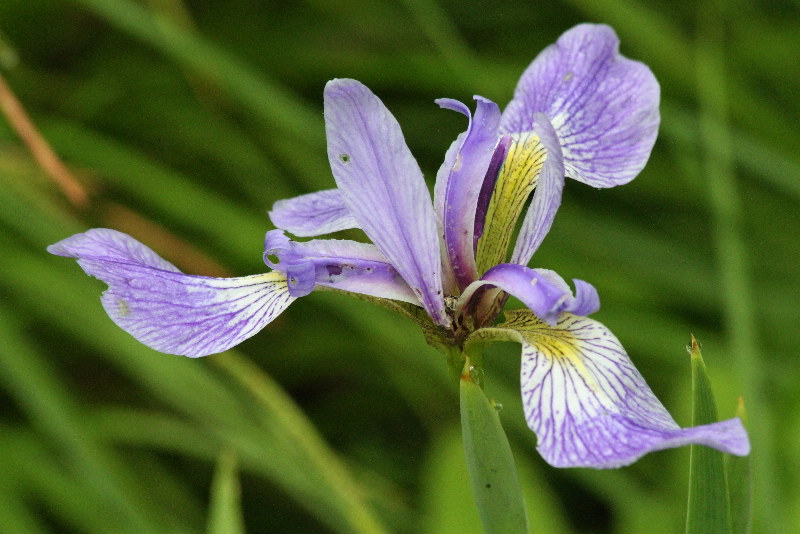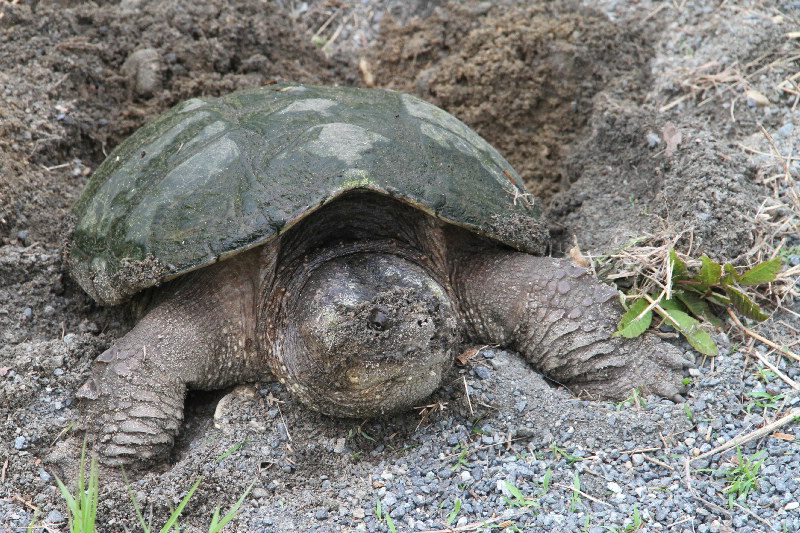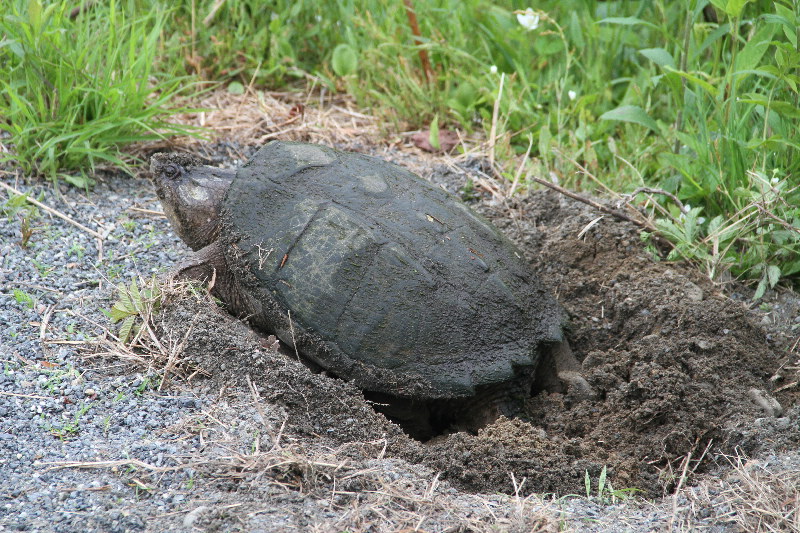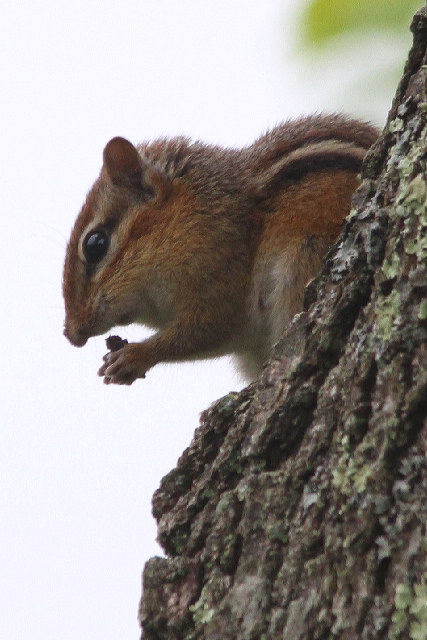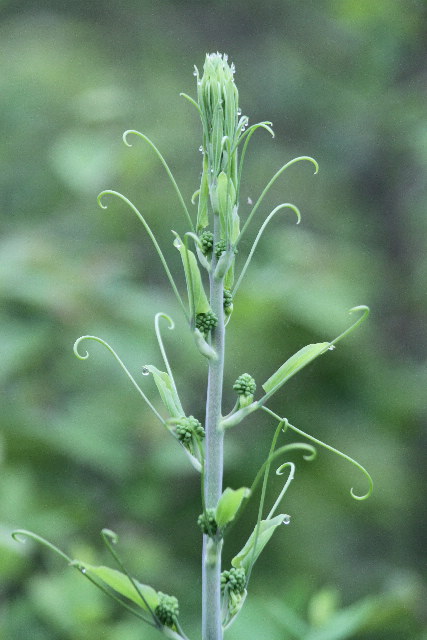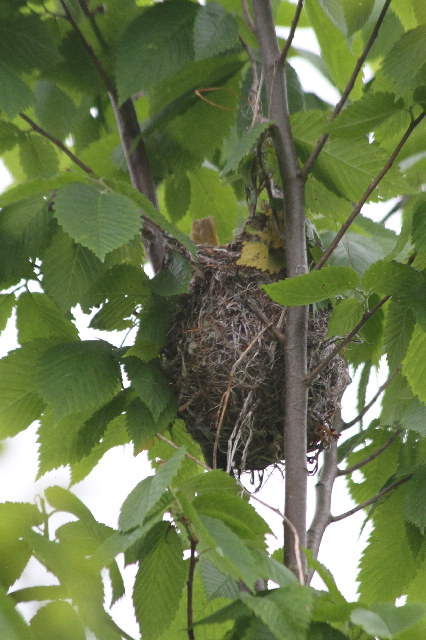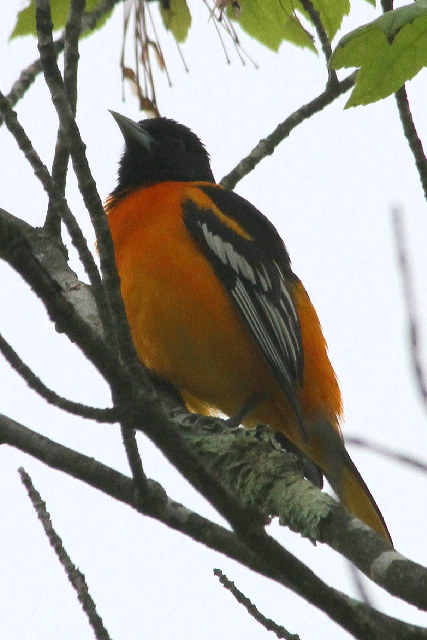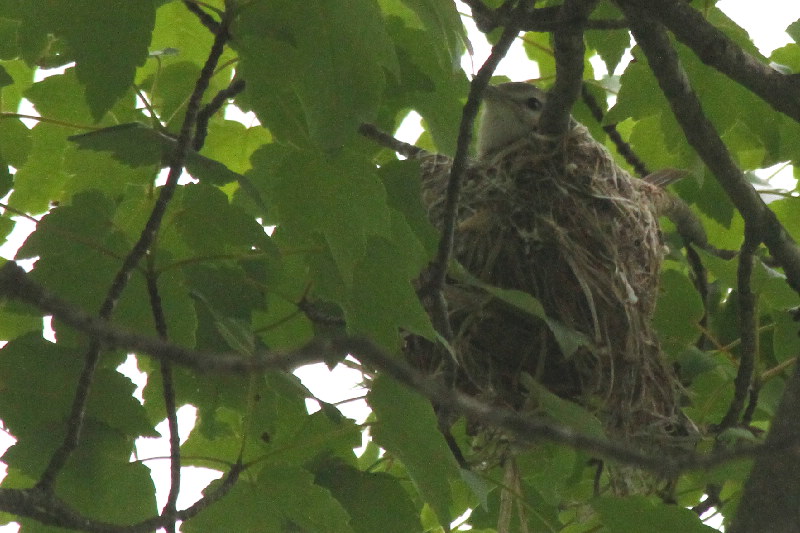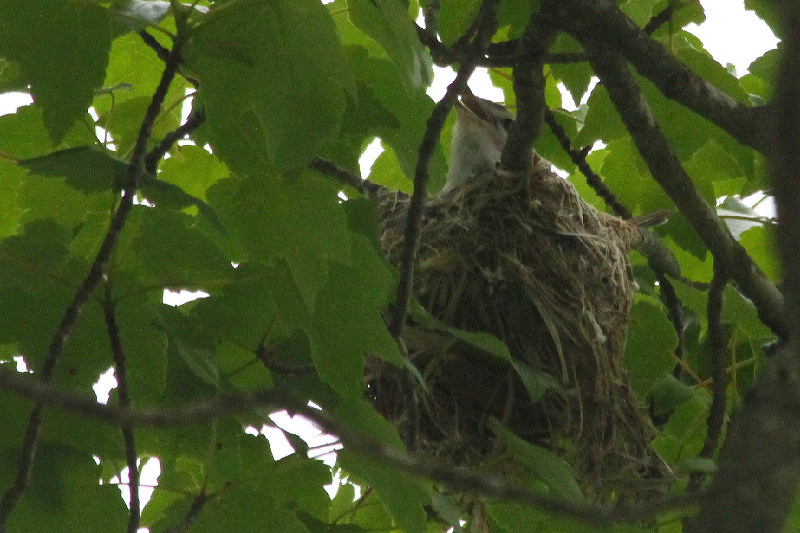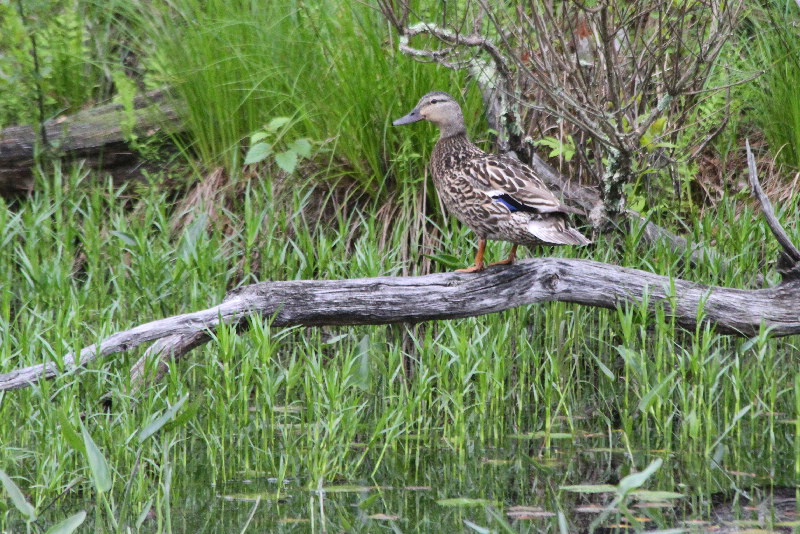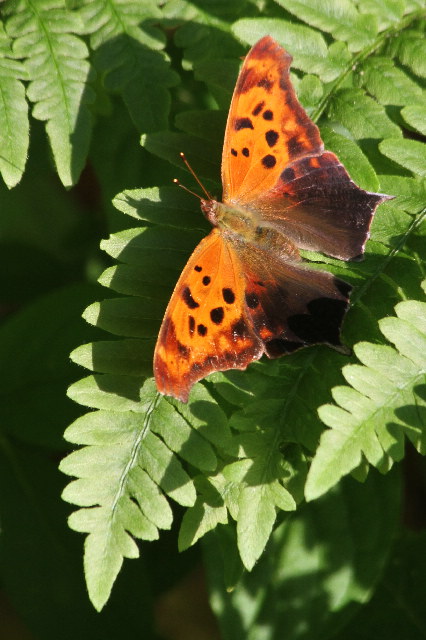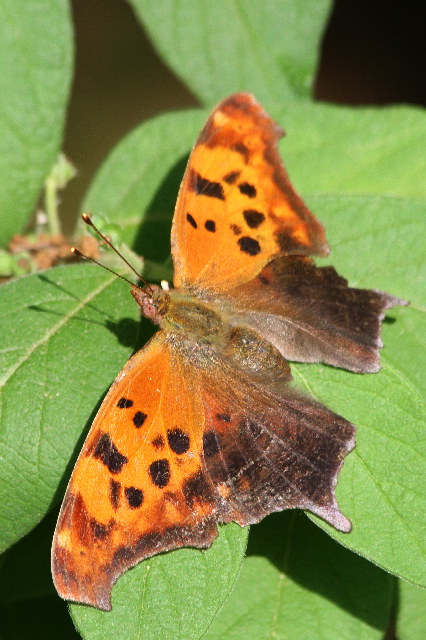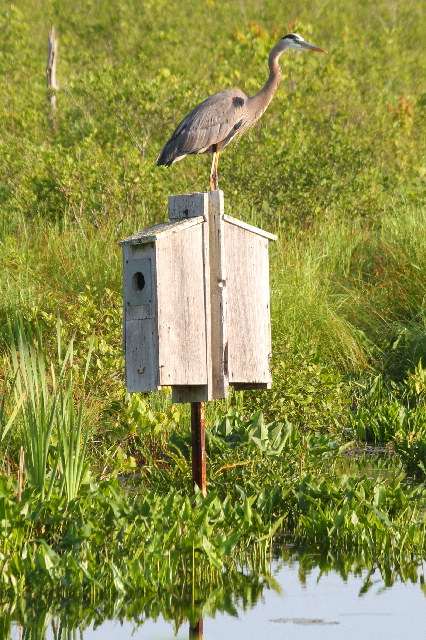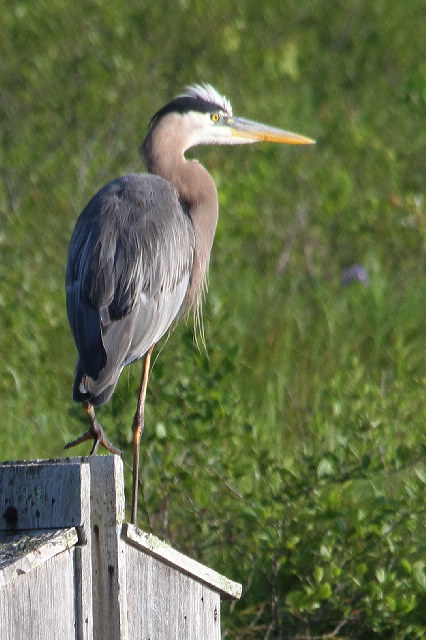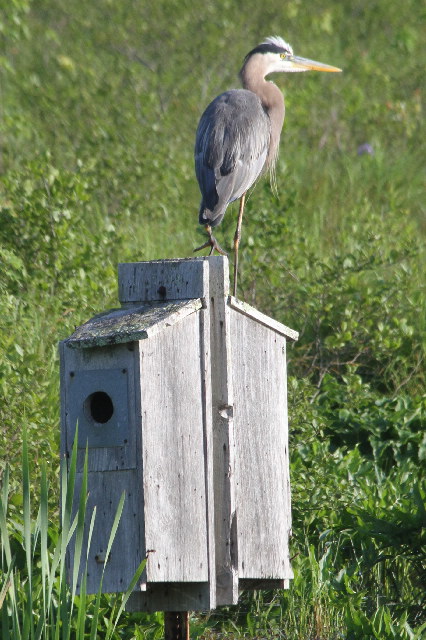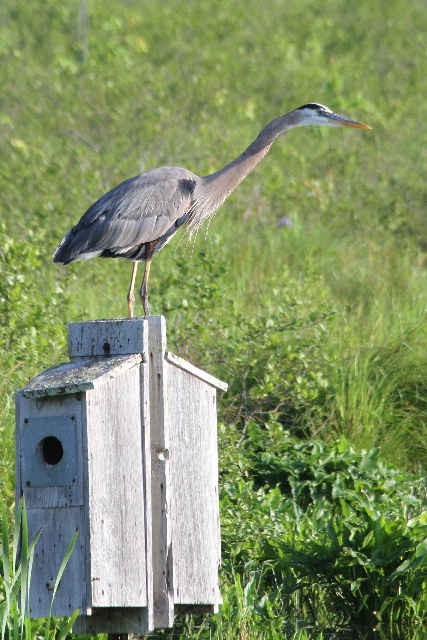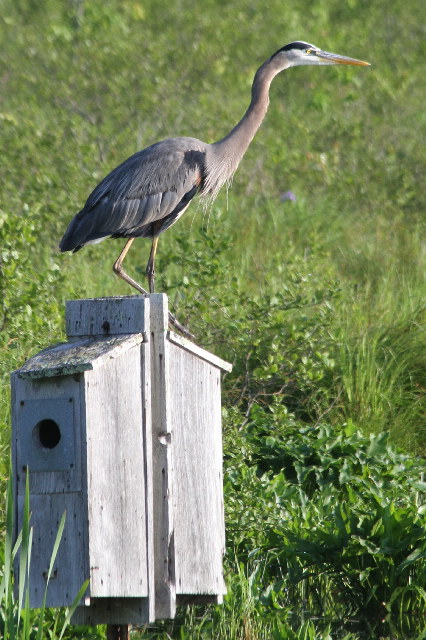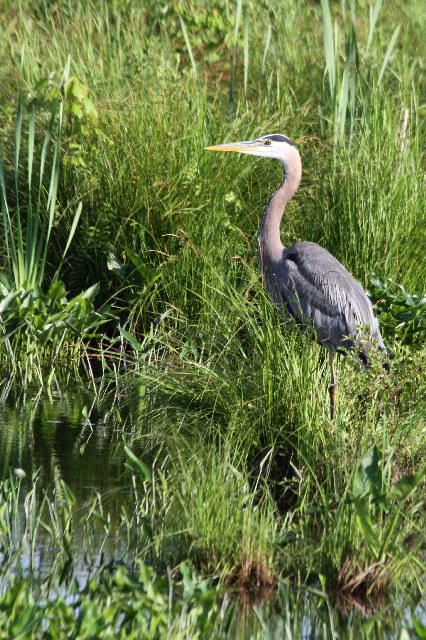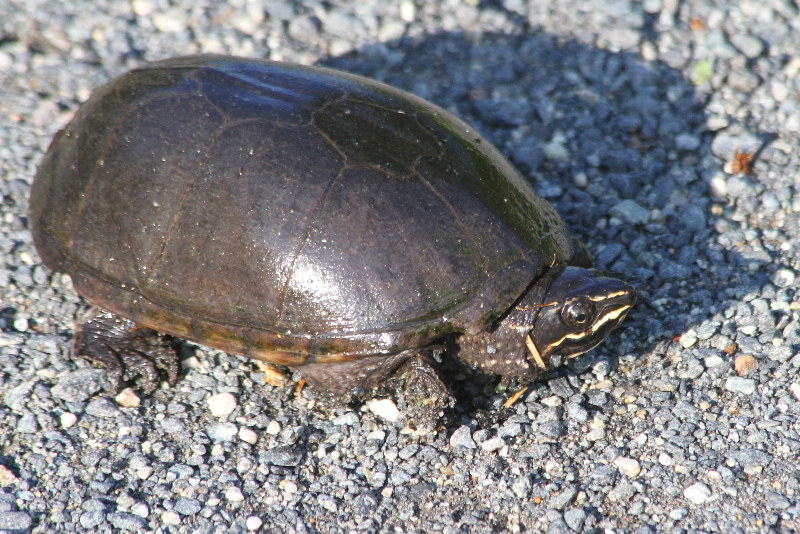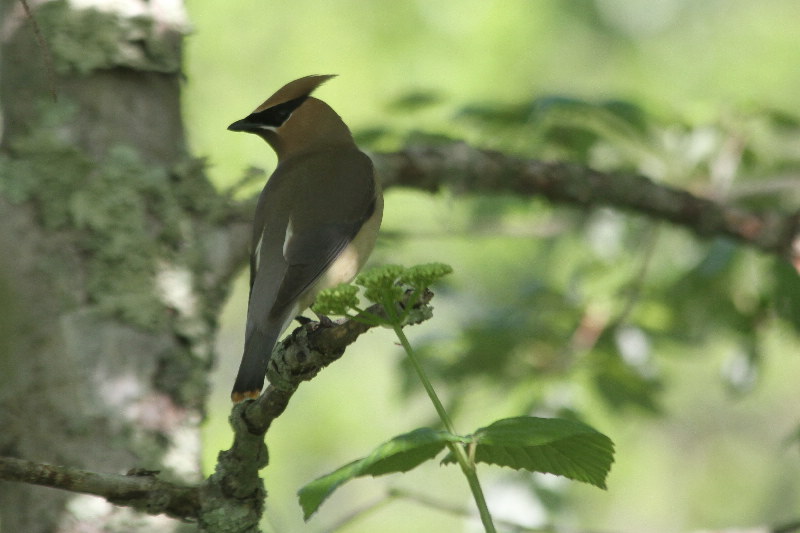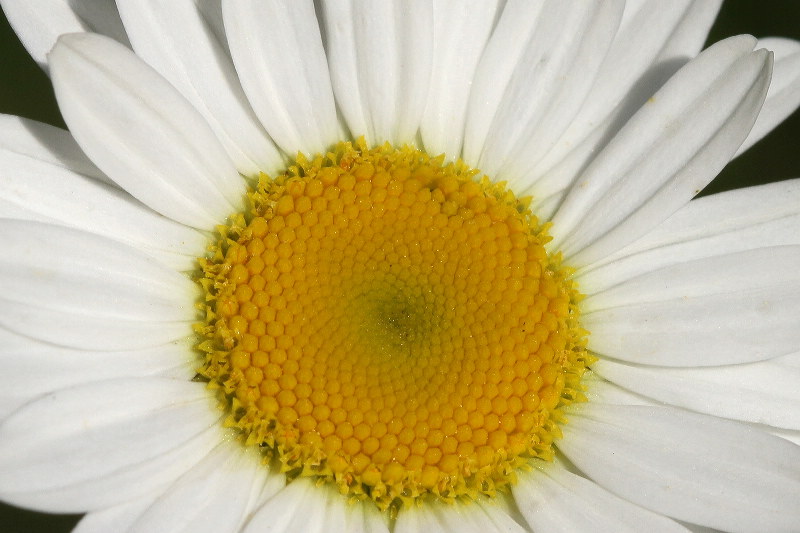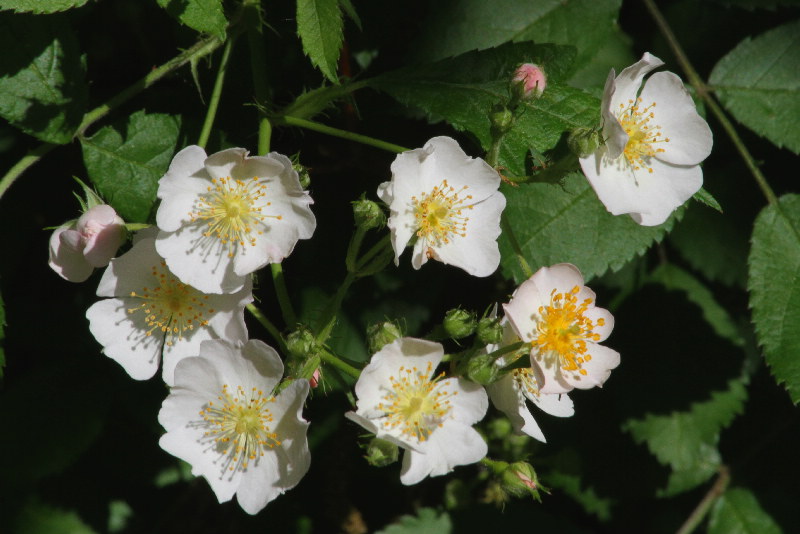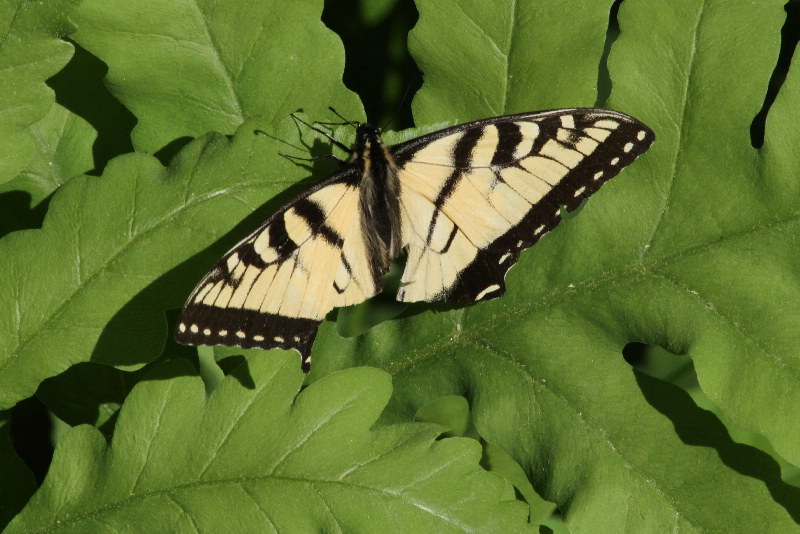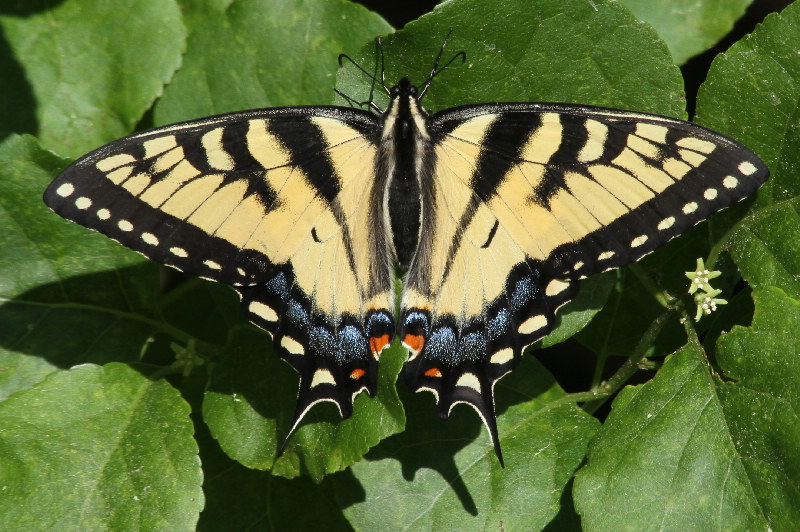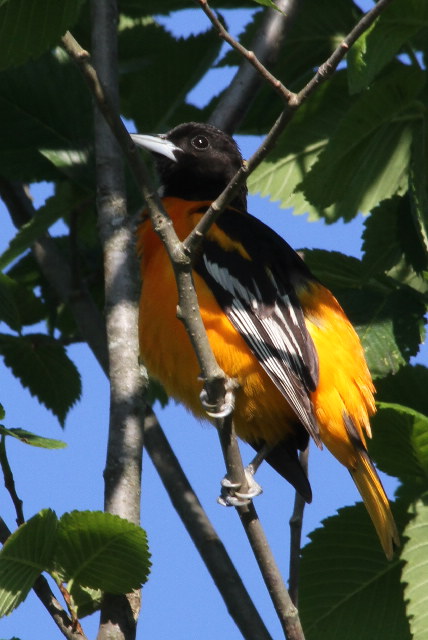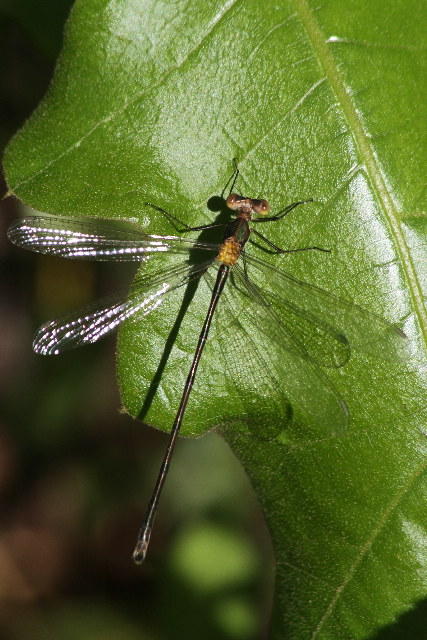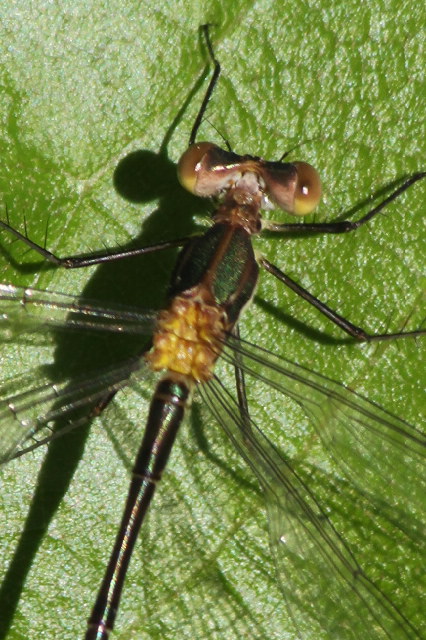Along the Air Line... 2011 - Spring, Part 11 The Air Line Trail in Eastern Connecticut - Stan Malcolm Photos |
mHome Page Stan's FlickR Albums |
May 28th. Larger Blue Flag Iris (Iris versicolor). |
The first of what will probably be many Snapping Turtles (Chelydra serpentina) laying eggs in soft soil beside the trail. |
|
|
Eastern Chipmunk (Tamias striatus) perched on the side of an oak. |
Carrion-flower (Smilax herbacea) in bud, with tendrils searching for support on nearby shrubs. |
One of several Baltimore Oriole (Icterus galbula) nests along the trail. You can just see the female's tail feathers sticking up at the left side of the nest. |
The male was singing nearby. |
A Warbling Vireo (Vireo gilvus) on its nest... |
...and singing on the nest. |
A female Mallard (Anas platyrhynchos). |
May 31st. A Question Mark (Polygonia interrogationis). |
Another specimen, found nearby. (This one shows more wear and damage to the hind wings.) These, and many other male butterflies, are territorial. If disturbed, be patient and they will return to near where you first saw them - sometimes to the same perch. |
A Great Blue Heron (Ardea herodius) atop a wood Duck house. |
|
|
|
|
|
A "Stinkpot" Musk Turtle (Sternothaerus odoratus). Four species of turtles are laying eggs along the edges of the marsh these days: Stinkpots, Spotted, Painted, and Snapping Turtles. |
June 2nd. One of a pair of Cedar Waxwings (Bombycilla cedrorum) in the marsh. |
Ox-eye Daisies (Chrysanthemum leucanthemum) have just started blooming. |
June 3rd. First blossoms on the Multiflora Roses (Rosa multiflora). |
This Tiger Swallowtail (Papilio glaucus) had a close call; nipped by a bird. Nothing vital lost and still able to fly. |
An intact Tiger Swallowtail, resting on Bittersweet. |
A Baltimore Oriole (Icterus galbula) close to the nest. |
A female Swamp Spreadwing damselfly (Lestes vigilax). |
"Spreadwings" in the family Lestidae rest with their wings spread to the sides, whereas most damselflies fold their wings over the back. |
